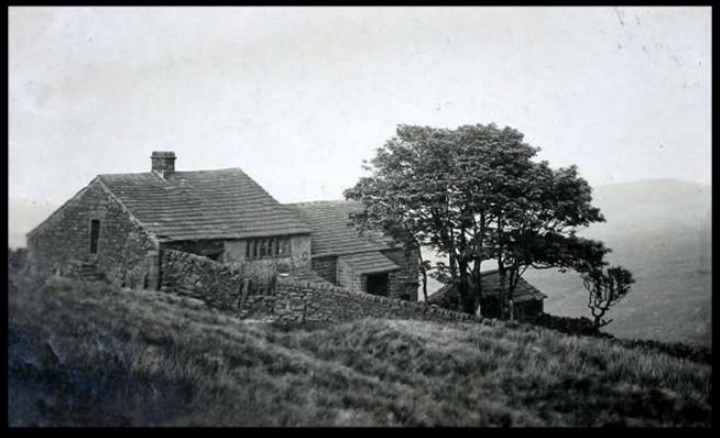”I am Heathcliff,” says Catherine. Many have written about the Heathcliff Factor under different forms. Heathcliff. Heath Cliff. A Heathcliff. Heathcliff-ness. I'm not going to ask what Harry Webb was thinking when he changed his name to Cliff Richard. All I know is that Mr Earnshaw couldn't bear to leave the tawny orphan to starve in the streets of Liverpool - the Irish capital, as it is sometime called. Heathcliff and the Irish Hunger. A blasted heath. A beetling cliff. A given name with no surname. A surname with no first name. An intruder in the Earnshaw family who becomes the magnet of all harm.
Because he was once abandoned he will not be abandoned again. Because he never had anything of his own he wants to have it all. How does it actually happen in the story spun by Emily Bronte? Well, it turns out that the crisis occurs in the space of a semi-colon. Literally so. At the moment when Catherine tells Nelly that she loves Edgar, 'as anyone would', and that she loves Heathcliff as constantly as the rock under the Yorkshire moors, a catastrophe yawns. Heathcliff is listening in the wings and hears only half the sentence before he flees while a semi-colon is hanging in the air: “It would degrade me to marry Heathcliff now; so he shall never know how I love him [...] not because he’s handsome, Nelly, but because he’s more myself than I am.” Between “degrade me” and “love him” he is out of earshot and forever departed into his own hell - the Paradise Lost which is Wuthering Heights.
The trouble with Catherine is her double-nature. All the time she has been two-timing him since the two children first visited Thrushcross Grange where she learned to like the manners of the Lintons more than those of the Earnshaws. The trouble is that Thrushcross despises the orphan Heathcliff from the outset and implacable thereafter, and hence she has to negotiate the pitfalls of a false position in relation to each of them. Hence, as Nelly tells us, the conflict between her wild side and her polite side has led her “to adopt a double character without exactly intending to deceive anyone”. No malicious aforethought, lots of malignant consequences. So the catastrophe exists in her own mind and heart before it occurs anywhere else. And, when it happens, it is really the mirror-image of her own divided self.
To exist on paper, that division must reflect a prior contradiction in the mind of the author who created these monstrous beings much as Frankenstein formed his “creature” - in Mary Shelley’s neutral word - out of the affective disorder of his own mind, along with bits and pieces of dead people. Again, if Catherine is a riven being, Heathcliff is the destructive agency which has riven her. He is also the foreign element in Earnshaw family life that makes the ordinary process of exogamy impossible. On account of him she cannot abandon the endogamous bond formed between them in childhood nor enter fully into an exogamous partnership with Linton.
Hers is therefore a “double darkness” compelled to be loyal to something that is really nothing other than herself yet, at the same time, the most unimaginably different person in the world: Heathcliff. In this sense it is her narcissism which actually drives the plot: “He’s always in my mind: not as a pleasure [...] but as my own being”, she says. Besieged by male desire on both sides, she cannot take herself away from him any more than she can divorce herself. Catherine's doubleness is like facing mirrors destined to retreat into each other forever in a “forever” that connotes eternity in a more than metaphoric sense. Sixteen years have passed since her death when Heathcliff disinters her and kiss her on the face, still strangely intact in the grave. Not once either - like Gabriel Dante Rossetti - but repeatedly as, ghoul-like, he slips out the haunted window at Wuthering Heights to visit the graveyard where she lies.
”I have a strong faith in ghosts”, he says. It is the preternatural bond between Catherine and Heathcliff which warrants that faith and dictates the form it takes. Unless each should exist for all eternity what is the significance of their love? Will she be anything more than a passing memory when she is dead, she asks him bitterly on her deathbed. Elsewhere she tells Nelly that the world can have no existence for her without. By corollary, she says, if Heathcliff alone existed and the world did not, everything would be as it ought. This is actually the Gothic theorem of the immortality of the soul: Wuthering Heights - QED. Likewise, it is epitomises the romantic idea of transcendent selfhood in a country churchyard. Heathcliff and Catherine will forever meet there, part, and meet again in their neighbouring graves - the side of her coffin conveniently torn open before he died - because she is Heathcliff and he is Catherine.
So Lockwood is wrong, though we naturally like to think otherwise: there is to be no “quiet slumber” in their “quiet graves”. Instead, the feudal stability of Yorkshire Gimmerton has been disturbed forever by the arrival of a new being, Heathcliff, who can only be integrated into the community at the price of death to the other family persons concerned - simply as a consequence of its own uncontainable egoism ... unless we regard the mutually-forgiving love of young Cathy and Hareton - incidentally her cousin - as a resolution to the disturbance originally wrought by Heathcliff's arrival Wuthering Heights.
It takes no “hostile environment for migrants” to realise that this is an allegory of English altereity. Catherine, Heathcliff: English, Irish: the Man from God Knows Where.
